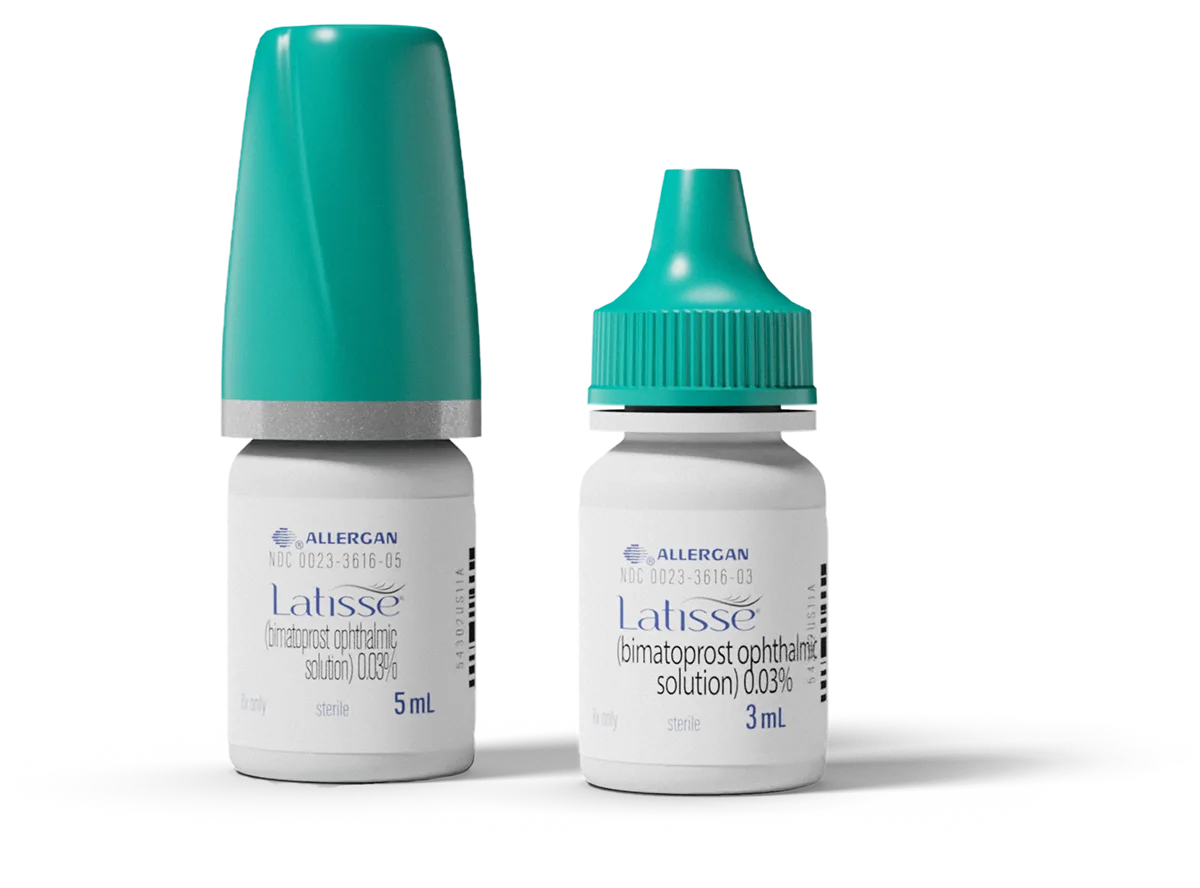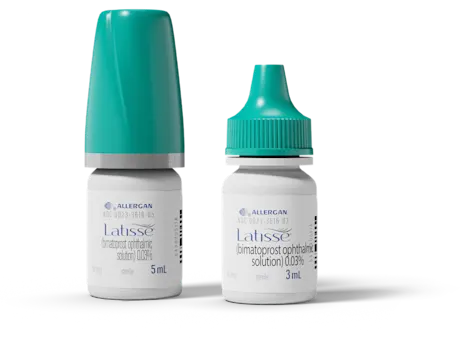

Important Safety Information for Latisse
What is the FDA-approved use of Latisse?
Latisse is used to increase growth of eyelashes in those with sparse lashes, including length, thickness, and darkness.
Your Ro-affiliated provider may recommend the use of Latisse for eyebrow growth in those with sparse eyebrows, if it is appropriate for you. This is considered an off-label use of the product.
Who should not use Latisse?
Do not use Latisse if:
You have a known allergic reaction to Latisse.
How should I apply Latisse to my eyebrows?
Use Latisse on your eyebrows once a day, preferably at night.
After thoroughly cleansing the area, apply a drop of Latisse to a new applicator brush and sweep it on the eyebrow, brushing in the direction of natural or desired hair growth.
Use a clean tissue or cotton swab to wipe away any excess medication that may have gotten on your skin.
Repeat on the other eyebrow. The same applicator can be used for both eyebrows.
Discard the used applicator after application to both eyebrows.
Eyebrows may gradually return to previous appearance if Latisse is discontinued.
What should I tell my Ro-affiliated provider before using Latisse?
It’s important to tell your Ro-affiliated provider all of the medications you are currently taking, including prescription, over-the-counter medications, vitamins, and herbal and dietary supplements.
Some medications to watch out for include:
Lumigan, which has the same active ingredient as Latisse, or other prostaglandin analogs that lower intraocular pressure. Latisse may decrease the intraocular pressure lowering effect of these medications.
It’s important to share your entire medical history with your provider. In particular, tell your provider if you have or have a past history of:
Glaucoma
Active eye inflammation (e.g. uveitis)
Macular edema
Aphakia
Have recently had a procedure on one or both eyes, including Lasik surgery or cataract surgery
Other eye problems
It is unknown if Latisse will be effective for eyebrow growth in people who have:
An uncontrolled systemic disease
Any known disease, infection, or abnormality in the eyebrow area or hair shaft
Systemic disease, including all types of alopecia areata, which could prevent hair growth or produce abnormal growth
Substantial permanent eyebrow loss due to overgrooming
Any skin pigmentation/depigmentation, tattoos, moles, or scars within the eyebrow area
Permanent injectable fillers in and around the eyebrow area in the last 12 months or who have received systemic treatment in the last 12 months of screening with agents that may affect hair growth
Facial surgery (e.g., brow lift) or eyebrow extension in the last 3 months
Temporary or semi-permanent eyebrow fillers or eyebrow tint, dye, or bleaching in the last 2 months.
Tell your provider if you are pregnant, planning to become pregnant, or breastfeeding. You should discuss with your provider if Latisse should be used during pregnancy or while breastfeeding.
Withholding or providing inaccurate information about your health and medical history in order to obtain treatment may result in harm, including, in some cases, death.
What are the most serious side effects that I or a caregiver should monitor for when using Latisse?
If you are experiencing a medical emergency, call 911 or seek immediate medical attention.
Effects on Intraocular Pressure: If you are using Lumigan, which has the same active ingredient as Latisse, or other prostaglandin analogs for the treatment of intraocular pressure, using Latisse at the same time may decrease the pressure lowering effects of the other medications. Your provider should monitor for changes to intraocular pressure.
Darkening of the Iris: There is potential for increased brown iris pigmentation which is likely to be permanent. Iris color changes are more likely when bimatoprost (the active ingredient in Lumigan and Latisse) is applied directly into the eye. Apply Latisse only to the eyebrows and not directly into the eye.
Darkening of the Skin: Latisse can cause darkening of the skin where it is applied. In most patients, this is reversible upon discontinuation of Latisse.
Hair Growth Outside the Treatment Area: There is the potential for hair growth in areas where Latisse comes in repeated contact with the skin surface. Apply Latisse only to the area of desired eyebrow growth and carefully blot excess solution to avoid it running down the cheek.
Intraocular Inflammation: Use with caution if you have active intraocular inflammation (e.g., uveitis) because inflammation may be exacerbated.
Macular Edema: Macular edema, including cystoid macular edema, has been reported when treating elevated intraocular pressure with Lumigan, which has the same active ingredient as Latisse. Latisse should be used with caution in aphakic patients, in pseudophakic patients with a torn posterior lens capsule, or in patients with known risk factors for macular edema.
Risk of Contamination: Avoid allowing the tip of the bottle to touch any other surface. The same applicator can be used for both brows, but do not apply to the eyelid or eyelash area after use on the brows Serious infections may result from using contaminated solutions or applicators.
Use with Contact Lenses: Latisse contains benzalkonium chloride, which may be absorbed by and cause discoloration of soft contact lenses. If using Latisse for eyelash growth, contact lenses should be removed prior to application of solution and may be reinserted 15 minutes following its administration.
What are the most common side effects of Latisse used for eyebrows?
Redness, itchiness, and irritation at the application site.
The most common side effects of Latisse used for sparse eyelashes were the following:
Eye pruritus (itchy eyes)
Application site redness
Conjunctival hyperemia
Darkening of the skin where Latisse is applied
You are encouraged to report negative side effects of prescription products to the FDA. Visit www.fda.gov/medwatch or call 1-800-FDA-1088.
This information is not comprehensive. Please see the full Prescribing Information for complete safety information.